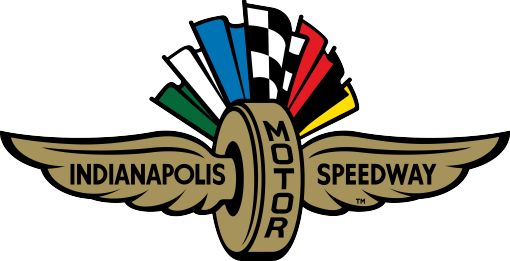Regular #SpeedRead readers will recall Marshall Pruett’s eight-part series on “Weird and Wonderful Cars of the ‘500’” that appeared in the weeks leading up to the 100th Running of the Indy 500 presented by PennGrade Motor Oil. Now, the feature continues with one car featured regularly.
MORE: The Penske PC17 | Thermo King Special | ’73 Foyt Coyote | ’62 Thompson/Buick | Chaparral Lolas | Dynastic McLarens | Screen pioneers | Truesports 92C | The Wildcat
The Chevrolet Brothers and the Fabulous Frontenacs
Louis, Arthur and Gaston Chevrolet formed the Chevrolet Motor Car Company 157 days after the inaugural Indianapolis 500 took place in 1911. Their automotive endeavors, destined to launch the name “Chevrolet” onto the world stage, were intertwined with the Speedway during the great race’s formative years, but not under the brand one might expect.
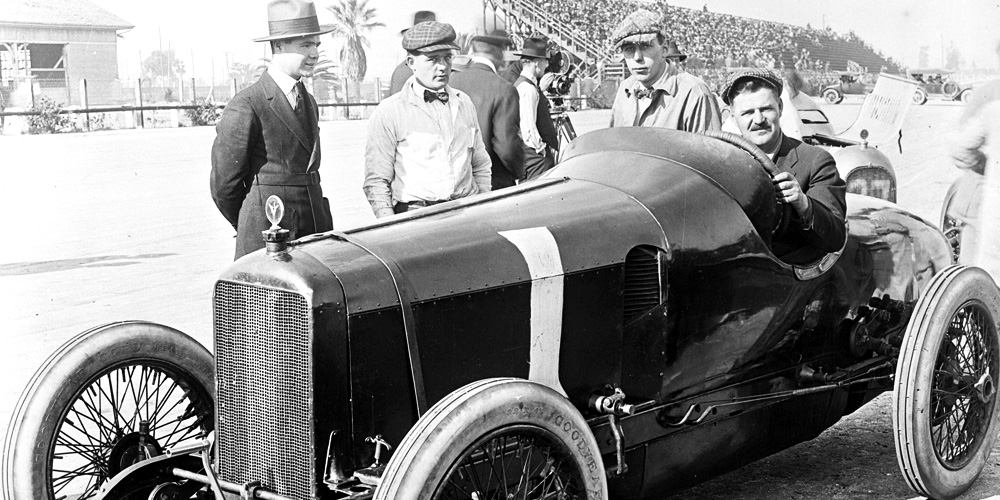
The Chevrolets, diehard competitors, took to the Brickyard with a different creation, the Frontenac, while developing the range of “Bowtie” offerings for a newly mobile United States of America. Named after a famous French soldier-turned-governor, the Chevrolets formed the Frontenac Motor Corporation as an aftermarket firm dedicated to producing specialist performance parts for Ford’s revolutionary Model T.
Thanks to the growing importance of a certain 500-mile race in Indianapolis—one where upstart automobile companies and tuning houses could achieve overnight success—the Chevrolet brothers created the first racing Frontenac for the 1916 event. In almost every capacity, that initial “Fronty” was miles ahead of the competition in design philosophy.
Decades before famed Lotus designer Colin Chapman thought to “add lightness” to his Formula 1 cars, Louis Chevrolet—the engine guru of the family—embraced the use of light alloys. His first Fronty engine in 1915, a 183 cu. in four-cylinder single-cam creation, was fashioned almost entirely out of aluminum….
Bucking the trend to use heavier steel, Chevrolet’s aluminum motor was placed into a Fronty chassis that was also constructed from aluminum in almost every area. Said to weigh nearly 200 pounds less than its rivals, the streamlined 1916 Fronty (above) set an early, innovative standard for the Chevrolets that continues today at the Speedway.
The only area holding the first Fronty back was raw power, and with the ongoing efforts of American engineer Cornelius Van Ranst and Louis Chevrolet (left to right, below) to make gains in the engine bay, the cars sped towards success as a new decade approached.
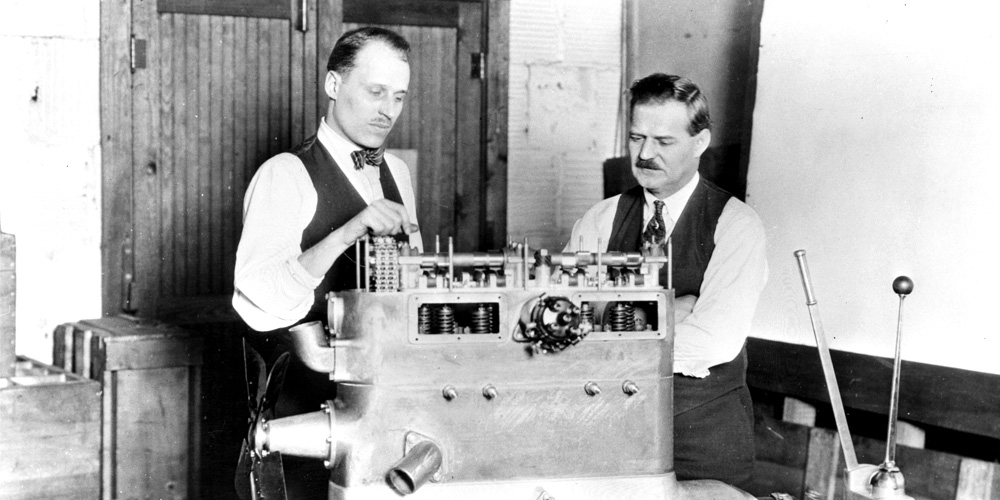
Making an estimated 98 hp at 3200 rpms, the Fronty had evolved significantly by 1920. The first Fronty showed incredible potential in 1916, but with World War I’s intervention, the lessons learned from that initial foray would have to wait until the great race was resumed in 1919.
From an unfulfilling 12th-place finish in 1916 to a career best seventh overall in 1919 (below), Louis Chevrolet demonstrated the engineering prowess contained within the small but dynamic Frontenac team.
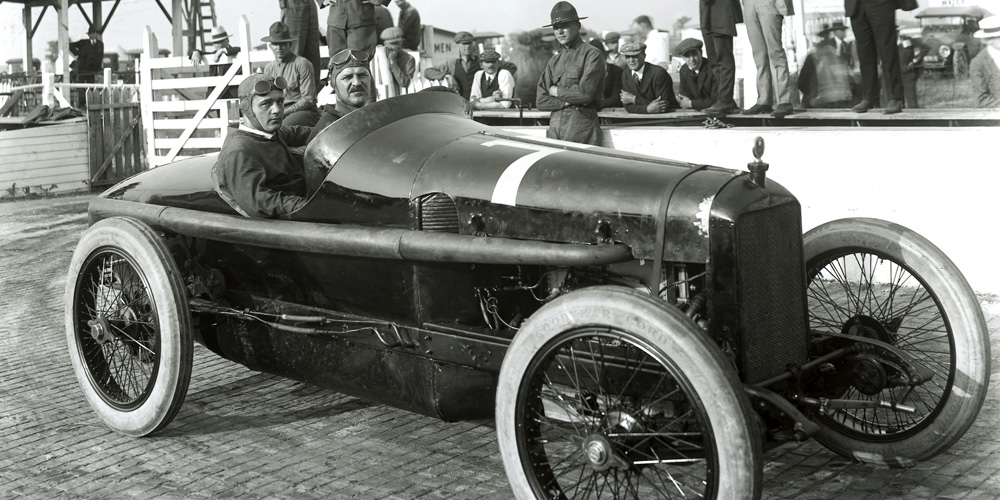
And thanks to the aerodynamic development at the front of the car for 1920 (below), the Chevrolets—with Gaston behind the wheel—earned the first Indy 500 victory for the brothers’ fantastic chassis and engine combination. Painted in green and white, Chevrolet drove the No. 4 car from sixth on the grid to earn the win, but not without a bit of drama after pitting for a splash of fuel just three laps from the finish.
For their achievement in 1920, the Chevrolets took home $21,800 in prize money, the equivalent of $263,000 today.
Indy legend Tommy Milton would add a second and final win for the car in 1921 (below).
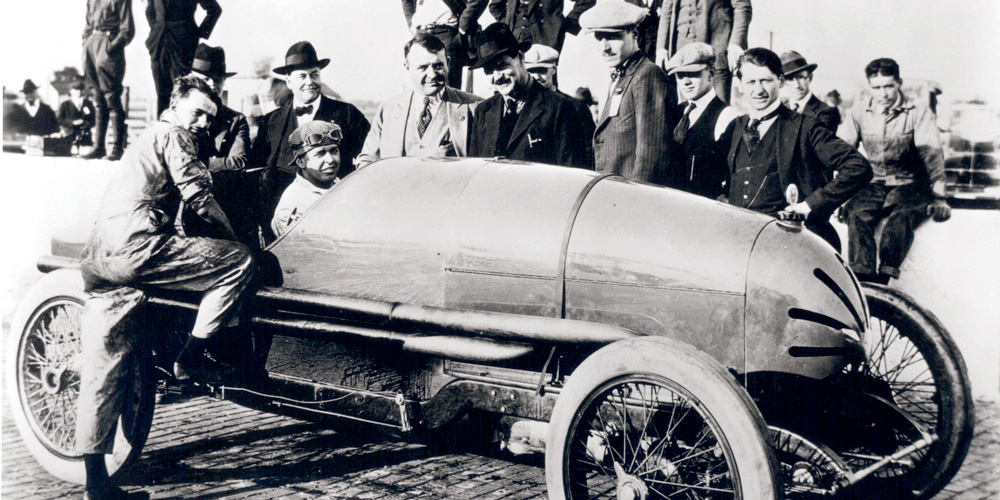
Through their forward-looking work 100 years ago, the Fronty’s legacy continues in the Verizon IndyCar Series where Chevrolet has won five straight Manufacturers’ championships, three consecutive Drivers’ championships, and scored its most recent Indy 500 win in 2015 with Team Penske’s Juan Montoya.

And in a nod to one of the Indy 500’s grand innovators, we’ll close with a wish of Merry Christmas to all and a happy birthday remembrance to Louis Chevrolet, born December 25,1878.
